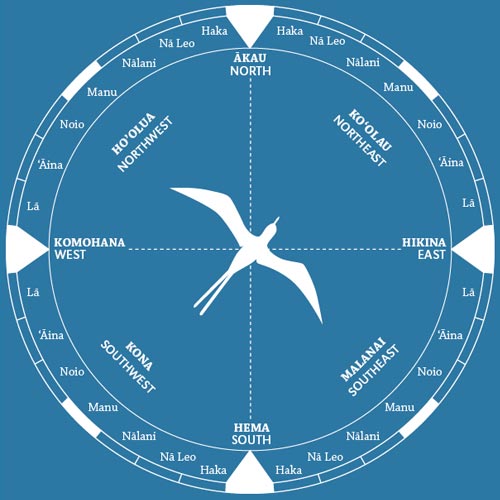 Polynesian Star Compass
Polynesian Star Compass
The Polynesian star compass divides the 360-degree horizon into four houses that align with the cardinal directions: hikina (east), komohana (west), akua(north) and hema (south). Each house is further subdivided into eight sections, creating a compass with thirty-two divisions in all. “Houses in the east reflect the houses in the west,” says navigator Chad Baybayan. “The compass also reflects northeast to southwest, northwest to southeast.
“The compass focuses on the rising and setting points of the sun. Everything arrives on one horizon — east — crests overhead, and sets in the west.”
Once the navigator aligns the compass, say, with the setting sun, the stars rise and set in parallel overhead. A star that rises one house to the north of hikina will arc overhead and set one house to the north of komohana. As stars rise throughout the night, they are fixed in relation to one of the compass houses or points, and in this way, the navigator sets a track as accurate as can be.
Baybayan has practiced indigenous navigation for more than thirty years. For him, the star compass is not an external apparatus, but an internalized environment that extends in every direction to the horizon, and up to the zenith, with the canoe — and himself — in the middle.
“Nainoa [Thompson] taught me this metaphor of the bird and the canoe,” says Baybayan. “He cut out a paper canoe and bird and put the bird on the table and spun it around. The bird always has a relation with the edges of the horizon. Birds are never lost at sea; they have an internal compass. If the head of the bird points in one direction, the tail [points to] the opposite. Same with each wing. The bird doesn’t have to see what’s in front of him if he knows what’s behind him. Nainoa put the canoe on the table and said, ‘The canoe and the bird are the same thing.’”





